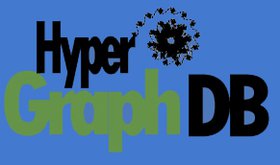HyperGraphDB
HyperGraphDB is an extensible open-source graph-based data storage engine. It implements the ability to store hypergraph relationships, which make it suitable for complex data and knowledge representation problems. It relies on object called an atom as its unit storage, where an atom is either a node in the graph or an edge that can point to multiple nodes and/or edges. It uses BerkeleyDB as its key value store, and operates as an object-orientated Java database.
History
Originated from an AI project called OpenCog in 2007. This project aims to build an open source framework for AGI, and HyperGraphDB is a component of the project that will handle long-term storage of complex representations. HyperGraphDB is inspired by the paper "Directed Recursive Labelnode Hypergraphs: A new Representation-Language", by Harold Boley, because most AI applications learn a higher-order, general representation, that can not be described in an ordinary graph but rather better expressed in a hypergraph.
Concurrency Control
Multi-version Concurrency Control (MVCC) Timestamp Ordering Two-Phase Locking (Deadlock Detection)
HyperGraphDB is Atomic, Consistent, and Isolated but not Durable. It implements the Multi-Version Concurrency Control, and is fully transactional. To ensure consistency in peer to peer transactions, they use timestamps to make sure the queries are executed in order. HyperGraphDB also implement automatic deadlock detection that will randomly kill a process if a deadlock is encountered.
Indexes
HyperGraphDB maintains 3 main indexes for efficiency: mapping from atom to its incidence set, mapping an atom to the set of all its atoms it is pointing to and the mapping of an atom to the value store. Users of the DBMS can implement their own indices as long as they define a mapping from atoms to atoms.
Website
Source Code
https://github.com/hypergraphdb
Tech Docs
http://www.hypergraphdb.org/?project=hypergraphdb&page=LearnHyperGraphDB
Developer
Kobrix Software
Country of Origin
Start Year
2007




